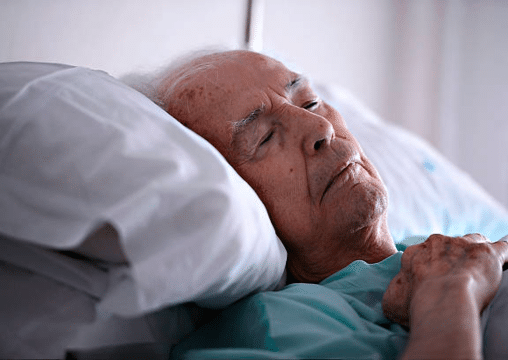Bedsores can be extremely painful for those who are susceptible to them and may lead to other, more serious conditions. The development of bedsores in an older person is almost always preventable, and when they appear, it may be a sign of elderly abuse. Ensure that you keep a close eye on your older loved one for signs of bedsores, as well as other potential issues.
Common Causes of Bedsores in Nursing Home and Long-Term Care Residents
There are five main causes of bedsores. These include the following:
1. Pressure
Pressure is one of the most common causes of bedsores. Bedsores can develop when there is a constant weight on one part of the body. This pressure leads to the lessening of blood flow to the tissues.
Without the transfer of blood flow, nutrients are stymied from passing through to areas that need them, leading to possible skin and tissue death in the affected areas. Commonly affected areas are locations that don’t have a lot of muscle and fat and lie over a bone, such as the spine, shoulder blades, hips, heels, and elbows.
2. Friction
If the skin rubs against clothing or bedding often, it can become vulnerable to injury and lead to the development of bedsores that could potentially become fatal if not cared for properly. This is particularly true in cases where the elderly person may lie in bed but moves certain body parts frequently, such as the elbows or heels.
3. Shear
If the elderly person is subjected to movement in the opposite direction often, they may develop a sore in that area. Common examples of this include being elevated in a bed but sliding downwards due to the angle. As the tailbone moves down, the skin over the bone may stay in place, essentially pulling in the opposite direction.
4. Moisture
Moisture can be a problem, especially if an elderly person suffers from incontinence. If the patient is unable to maintain control of their bladder or stool, they may develop moisture in the area, which can severely irritate the skin.
In these cases, it’s extremely important for nurses and caregivers to ensure that the elderly patient is properly looked after.
5. Malnutrition
If elderly people do not receive the fluids, calories, protein, vitamins, and minerals they need in their daily diet, they may become more susceptible to bedsores. When not enough nutrients are available, it can result in less healthy skin and bone.
Are bedsores preventable?
Bedsores are preventable in most cases. Caregivers must take an active role in ensuring they don’t develop, especially in cases where an elderly individual has very limited mobility.
Methods to prevent bedsores include:
- Repositioning the patient regularly to avoid pressure on one area of the skin
- Keeping skin clean and dry
- Eating well and drinking plenty of water
- Managing stress
- Exercising daily
Taking appropriate care of an elderly person can help prevent bedsores from developing.
Are bedsores the result of nursing home neglect?
Yes, they can be. Caregivers and nurses who don’t adequately ensure that patients are cared for appropriately — especially when they’re at risk for bedsores — may commit nursing home abuse through neglectful inaction. It’s important for all individuals who have a relationship with the patient to monitor their care and ensure they aren’t neglected.
Some laws protect the elderly from neglect as residents of nursing homes or assisted living facilities. If you suspect that a patient may be experiencing neglect due to abandonment, you can reach out to a nursing home lawyer for help. They can assist in recovering compensation for medical costs incurred as a result of bedsores that develop from neglect.
How do I report suspected nursing home neglect or abuse?
There are many resources for reporting suspected nursing home abuse. Each state has a nursing home ombudsman program that was developed under 1972’s Older Americans Act to provide comprehensive services to curtail elder abuse in nursing homes. The ombudsman resolves issues concerning health and safety.
You can find your state’s ombudsman through the National Long-Term Care Ombudsman Resource Center.
You may also report all types of nursing home abuse through your state’s Adult Protective Services. Phone numbers for local branches can be found on the National Adult Protective Services Association website.


